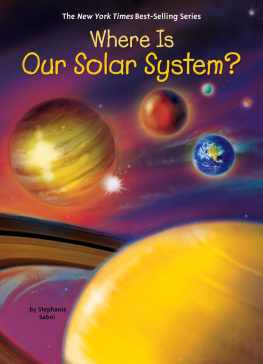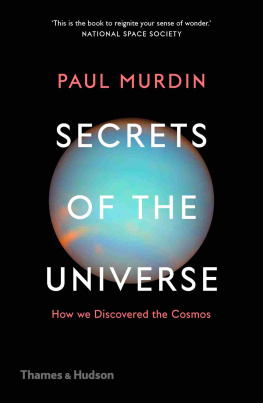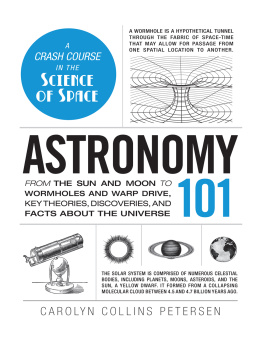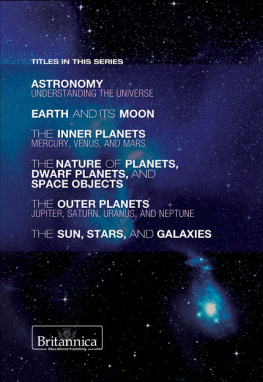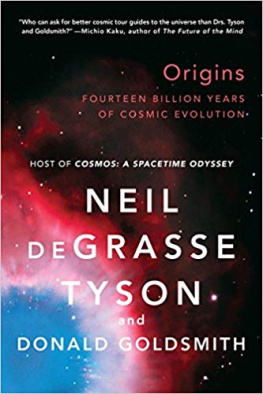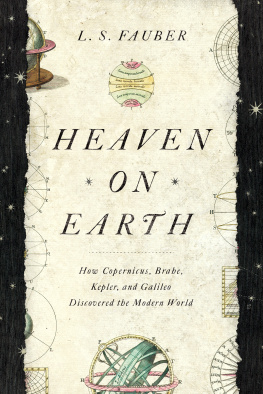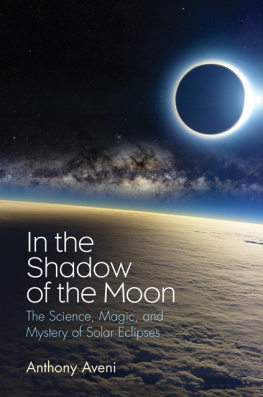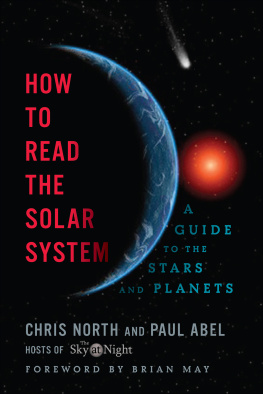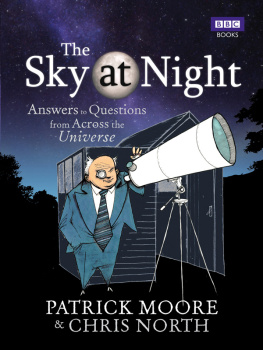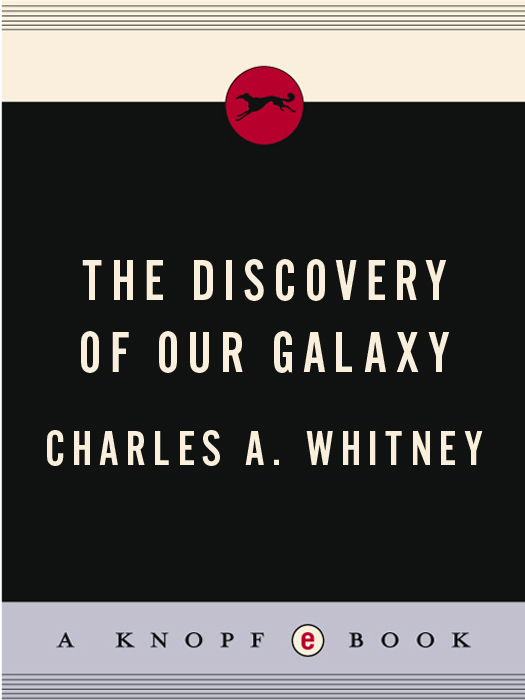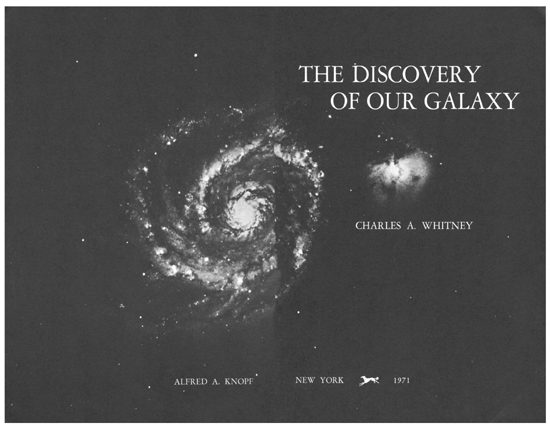THIS IS A BORZOI BOOK
PUBLISHED BY ALFRED A. KNOPF, INC.
Copyright 1971 by Charles A. Whitney
All rights reserved under International and Pan-American Copyright Conventions.
Published in the United States by Alfred A. Knopf, Inc., New York, and simultaneously in Canada by Random House of Canada Limited, Toronto.
Distributed by Random House, Inc., New York.
eISBN: 978-0-307-81709-9
Library of Congress Catalog Card Number: 76154942
v3.1
Dedicated to my father,
Charles Smith Whitney,
whose life was a work of art
Contents
ILLUSTRATIONS

The solar system, according to Copernicus
Tycho Brahes observatory
Young stars and nebulosity
Hubbles variable nebula
Reflection of light from the outburst of Nova Persei 1901
The changing brightness of Cassiopeia
The outburst of a nova
Expanding nebulosity around Nova Persei 1901
Keplers scheme of the orbits of Jupiter and Saturn
Keplers garden sculpture
The Milky Way in the constellations Sagittarius, Ophiuchus, and Scorpius
An atlas of the Milky Way (photographic mosaic)
The Praesepe star cluster
Isaac Newton (16421727)
From cannon ball to artificial satellite (diagram by Newton)
The Andromeda Nebula
The central region of the Orion Nebula
The nebula M87
The globular star cluster M3
M16, a nebula with stars
Thomas Wrights model of the Milky Way
An alternative hypothesis by Wright
Wrights universe of galaxies
The binary star Krueger 60
William Herschels diagram of the earths orbit
The planet Uranus
Herschels 20-foot reflecting telescope
Herschels mammoth 40-foot telescope
Our galaxy according to Herschel
The Great Nebula in Orion
Nebulae in the constellation Hercules
Stefans Quintet (of nebulae)
Drawings by Herschel
Dark region in the Milky Way
The nebula N.G.C. 1514
Planetary nebula in the constellation Aquarius
Herschel as an old man
Pierre-Simon Laplaces Nebular Hypothesis
The Tidal Theory
The Planetesimal Hypothesis
The Clouds of Magellan
John Herschel (17921871)
Drawings by the Earl of Rosse
The Crab Nebula, M1
The Earl of Rosses drawing of a spiral nebula
M51, a spiral nebula
The spiral nebula M81
Sir William Huggins (18241910)
Photographs of stellar spectra
The 36-inch Crossley reflector of the Lick Observatory
A late-nineteenth-century concept of our galaxy
Our galaxy as a spiral nebula
Schematic diagram of a pulsating star
Schematic diagram of an eclipsing variable
Globular star clusters in Sagittarius
The 60-inch reflector of the Mount Wilson Observatory
The current view of our galaxy
The 100-inch telescope of the Mount Wilson Observatory
Variable stars in the Andromeda Nebula
Light variations of Cepheid variables
Nebular types
The Hubble Tuning Fork
A barred spiral, N.G.C. 1300
Wide-angle photograph of the Milky Way, Southern Hemisphere
Edge-on view of spiral galaxy N.G.C. 4565
The Hertzsprung-Russell diagrams of two galactic clusters at different distances
The distribution of globular clusters and galactic clusters
Resolution of an elliptical galaxy, N.G.C. 205
Hertzsprung-Russell diagrams for the two populations
The spiral galaxy M104
The 200-inch Hale telescope, Mount Palomar
The 120-inch telescope of the Lick Observatory
Motions of stars near the sun
Planetary orbits
Schematic representation of the galactic rotation near the sun
Schematic diagram of a spiral galaxy
Negative photographs of two spiral galaxies
Tracing the spiral pattern of the Andromeda Nebula, M31
Spiral pattern of our galaxy
The nuclear jet in M87
An exploding galaxy, M82
A source of radio signals, N.G.C. 1316
The peculiar barred spiral N.G.C. 2685
An explosion? N.G.C. 1275
Four quasars
Dust clouds emerging from the nucleus of M31
PROLOGUE

For two thousand years, some have known the earth to be round. But only for twenty years have we known the detailed shape of our galaxythe spatial implications of that diffuse band of light we call the Milky Way. This book retraces the trail of ingenious arguments by which astronomers have interpreted the sky and built a picture of the galaxy in which we spin.
On a clear, moonless night in midwinter or midsummer, a plume of starlight rises motionless behind the scattering of constellations. To our eyes, the Milky Way is colorless, but we are deceived by the faintness of the light. If our eyes were more sensitive we would see a splendid display of colors: the blue and red of Orions stars, the deep yellow of Arcturus, the silver of Spica, and the sunlight yellow of Castor and Pollux, glowing wisps of red and pale blue, an occasional gap of dull red in the banks of faint stars.
The Milky Way is our island universeour galaxyand its shape had been outlined by inspired guesswork before 1800, but only within the past two decades have the arguments been made convincing and quantitative. New tools were required at each step, and many tools relied on new concepts, not merely new techniques.
Yet, even lacking quantitative tools, astronomers might have made substantial progress much earlier if it had not been for one disastrous fact, overlooked until 1930. Interstellar space is filled with obscuring dust that weakens starlight, falsifies estimates of distance, and totally blocks the visible light of vast portions of the Milky Way.
The recognition that our Milky Way is a spiral galaxy depended heavily on irrational elements of mans nature: his quest for divine revelation in the sky; his ability to unbridle his imagination and face ridicule from those he most respected; his stubborn insistence that for some problems a wrong answer is better than none; his willingness to hold two mutually contradictory ideas in his head and work with them both; his faith that theories should be esthetic; his preoccupation with the problem of his own identity.
It is just this appearance of irrationality that makes the work of astronomers so fascinating today and that provided the peaks of scientific excitement in the past. The discoveries of the great astronomers were no more inevitable in their time than the paintings of Rembrandt were in his. What they wrote, what they sensed in themselves, stood at the tip of their perceptions.


